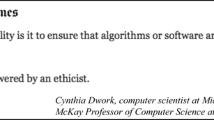Abstract
A counterfeit version of the Ethicon Prolene polypropylene mesh was distributed to hospitals and clinics and unintentionally implanted into patients undergoing tension-free hernia repair. On December 19, 2003, the Food and Drug Administration (FDA) issued a public health web notification indicating that the counterfeit mesh was not sterile or safe to use. To develop safety recommendations for patients with the counterfeit mesh implant, we compared the counterfeit’s structural, physical, chemical and mechanical properties with polypropylene meshes previously cleared by FDA. The mesh fibers for all the products tested were found to have similar chemical and physical properties. The mechanical properties were directly related to the knitted structure (loop size, repeat distance, fabric tightness) and the porosity. Extracts from the counterfeit mesh passed cytotoxicity screening tests. The FDA further recommended that if the mesh had been inadvertently implanted, then those patients should be monitored as would be the practice for any patient with an implanted surgical mesh.










Similar content being viewed by others
References
US Food and Drug Administration. FDA public health web notification: counterfeit polypropylene mesh. December 19, 2003. US Food and Drug Administration. January 6, 2004 <www.fda.gov/cdrh/safety/121903.html>
US Food and Drug Administration. FDA public health web notification: counterfeit polypropylene mesh. Updated May 7, 2004. US Food and Drug Administration. April 1, 2005 <www.fda.gov/cdrh/safety/121903.html>
US Food and Drug Administration (March 2, 1999) Guidance for the preparation of a premarket notification application for a surgical mesh. US Food and Drug Administration, Center for Devices and Radiological Health
Junge K, Klinge U, Prescher A, Giboni P, Niewiera M, Schlumpelick V (2001) Elasticity of the anterior abdominal wall and impact for reparation of incisional hernias using mesh implants. Hernia 5:113–118
Bendavid R, Abrahamson J, Arrgeui ME, Flament JB, Phillips EH (eds) (2001) Abdominal wall hernias: principles and management. Springer, Berlin Heidelberg New York
Amash A, Zugenmaier P (1997) Thermal and dynamic mechanical investigations on fiber-reinforced polypropylene composites. J Appl Poly Sci 63:1143–1154
Godar DE, Lucas AD (1995) Spectral dependence of UV-induced immediate and delayed apoptosis: the role of membrane and DNA damage. Photochem Photobiol 62:108–113
Dive C, Gregory CD, Phipps DJ, Evans DL, Milner AE, Wyllie AH (1992) Analysis and discrimination of necrosis and apoptisis (programmed cell death) by multiparameter flow cytometry. Biochem Biophys Acta 1133:275–285
Darzynkiewicz Z, Bruno S, Del Bino G, Gorczyca W, Hotz MA, Lassota P, Traganos F (1992) Features of apoptotic cells measured by flow cytometry. Cytometry 13:795–808
Carter NP, Rickwood D, Hames BD (1990) Flow cytometry: a practical approach. Oxford, New York, pp 45–67
Harrocks AR, Anand S (2000) Handbook of technical textiles. CRC, Boca Raton
Maier C, Calafur T (eds) (1998) Polypropylene: the definitive user’s guide and data book. Plastic Design Library, Norwich, NY, pp 1–43
Annual Book of ASTM Standards (1996) American society for testing and materials, Philadelphia, PA, pp 755–759
Bendavid R (1994) Prostheses and abdominal wall hernias. R.G. Landes Company, Austin
Waldrep DJ, Shabot M, Hiatt JR (1993) Mature fibrous cyst formation after Marlex Mesh ventral herniorrhaphy. Am Surg 59:716–718
Klinge U, Klosterhalfen B, Conze J, Limberg W, Obolenski B, Ottinger AP, Schumpelick V (1998) Modified mesh for hernia repair that is adapted to the physiology of the abdominal wall. Eur J Surg 164:951–960
Langenbach MR, Scmidt J, Zirngibl H (2003) Comparison of biomaterials in the early postoperative period. Surg Endosc 17:1105–1109
Welty G, Klinge U, Klosterhalfen B, Kasperk R, Schumpelick V (2001) Functional impairment and complaints following incisional hernia repair with different polypropylene meshes. Hernia 5:142–147
Greca FH, de Paula JB, Biondo-Simoes MLP, da Costa FD, da Silva APG, Time S, Mansur A (2001) The Influence of differing pore sizes on the biocompatibility of two polypropylene meshes in the repair of abdominal defects. Hernia 5:59–64
Rosch R, Junge K, Schachtrupp A, Klinge U, Klosterhalfen B, Schumpelick V (2003) Mesh implants in hernia repair. Eur Surg Res 35:161–166
Coda A, Bendavid R, Botto-Micca F, Bossotti M, Bona A (2003) Structural alterations of prosthetic meshes in humans. Hernia 7:29–34
Author information
Authors and Affiliations
Corresponding author
Rights and permissions
About this article
Cite this article
McDermott, M.K., Isayeva, I.S., Thomas, T.M. et al. Characterization of the structure and properties of authentic and counterfeit polypropylene surgical meshes. Hernia 10, 131–142 (2006). https://doi.org/10.1007/s10029-005-0042-6
Received:
Accepted:
Published:
Issue Date:
DOI: https://doi.org/10.1007/s10029-005-0042-6




